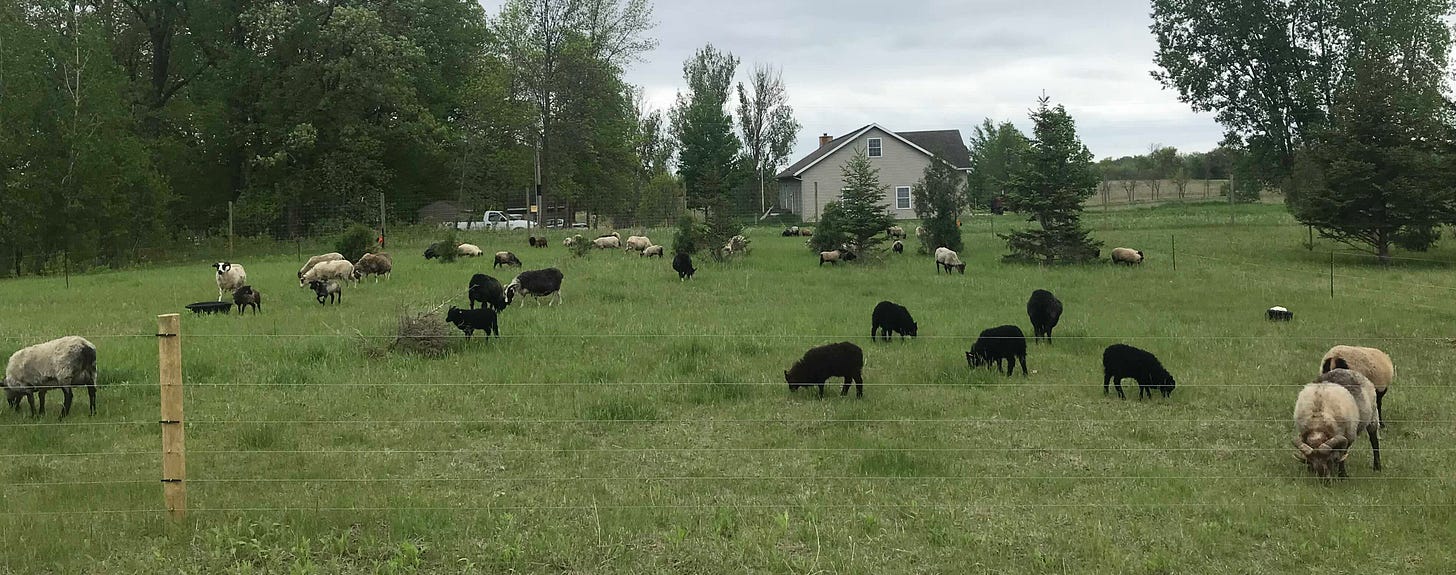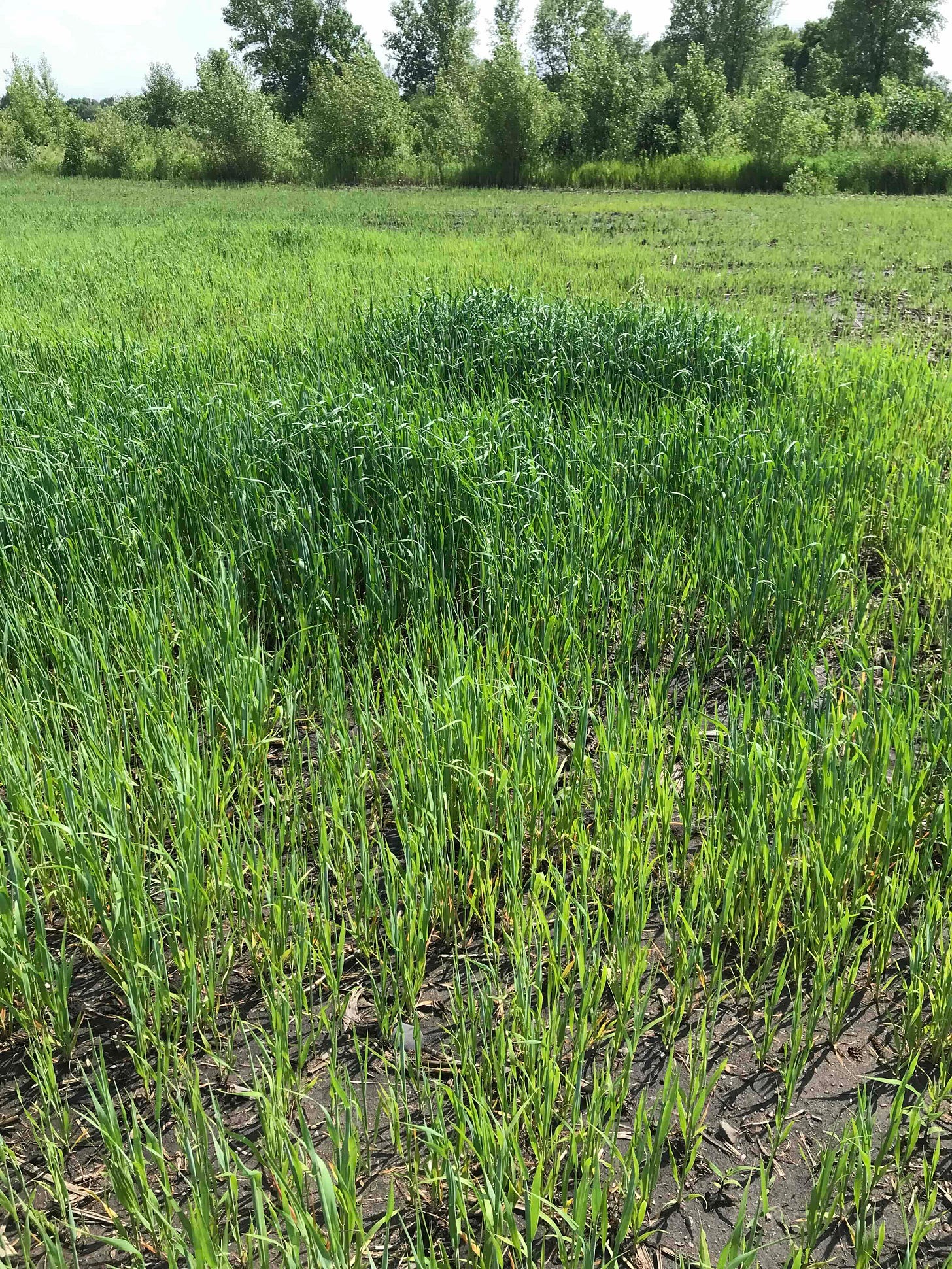As the administration’s funding cuts to federal programs roil the headlines lately, it may be hard to parse through some of the news. Media on the right usually react with satisfaction while those on the left recoil in disbelief and horror. The ensuing lawsuits will take time to resolve. I don’t know much about such things, but I’m guessing that the individuals and groups who would have received payments will of necessity have moved on by the time the suits settle, either finding new jobs, going out of business or turning to other sources of funding. That must be the intent, of course. A pause for several months may be as good as a more definitive end.
I’m really not trying to get into the middle of this one.
I’ll let others debate whether the proposed cuts to the USDA budget are a good thing or a bad thing. There’s a lot of schadenfreude in some quarters toward conservative farmers who may not receive money they expected. I’m not a fan of that. Agriculture isn’t an easy business, and most subsidies for farmers are intended for the good of the commons.
There are so many programs that benefit farmers that I couldn’t begin to list them here. One of the more bizarre headlines I saw recently said in effect that the administration contends that their proposed cuts to the USDA will not impact farmers. Then in the article came the list, purportedly from the administration, about which programs were on the chopping block. Of course, many of them make direct payments to farmers. So, it’s hard to know what’s being accurately reported and what’s the intention of the administration.
I thought I’d share some of my experience so people can understand how some of the federal money is used.
Environmental Quality Incentive Program
We’ve got to jump into some alphabet soup to begin talking about the programs. The Natural Resources Conservation Service (NRCS) is the agency that administers some payments to farmers, ranchers and other landowners that support improving the quality of soil, water, air and habitats. The agency came into being during the 1930s as a reaction to the way some agricultural practices of the time led to bad outcomes, including the dust bowl. Recall that the economic situation combined with the contribution of agricultural practices to environmental disasters led to a lot of hunger and misery. These days, the NRCS has several programs.
I have participated in their Environmental Quality Incentive Program (EQIP, pronounced “equip”) on a couple of occasions. While I benefitted financially, I got as much from NRCS advice as from their funding. The funding helped, but by no means made the projects financially easy.
First, the NRCS helped us build a high tunnel green house. Such light structures, effectively a metal frame covered with plastic sheeting, enable farmers to extend the growing season and improve the quality of vegetable crops while using less pesticides than open field production. That helps water and soil quality. We were very surprised when the NRCS informed us that our application had been funded since there was a gap of three years between us submitting it and its acceptance. Everything depends on the Farm Bill at the time for the NRCS, and Farm Bills, which also include food support for poor people such as the Supplemental Nutrition Assistance Program (SNAP), had been so contentious that Congress hadn’t been able to pass one. Finally, one did get through, and our EQIP application came up. (As I write this, the current Farm Bill is on its second extension as legislators kick the can down the road rather than working out differences through compromise.) NRCS funding covered about 35% of the cash-out-of-pocket for the high tunnel, and I did all the labor myself. Having a skid steer and a tractor helped, but it was a huge amount of time and very tough labor, mostly working alone. If I had hired someone else to do the work, NRCS financial contributions would have been very small compared to the actual cost of building the greenhouse.
Not long after I completed the greenhouse, I applied for a second grant to install fencing so I could rotationally graze livestock. Rotationally grazing ruminants on the land is one of the best ways to conserve soil and water. Plants and their roots stay on the soil in pastures, preventing runoff and wind erosion. Because the livestock are rotated around, they never completely mow down plants so much that they can’t recover. The animals provide fertilizer via their manure, helping maintain robust ecosystems of bacteria and fungi that filter water and make up a significant proportion of healthy soils. It’s kind of ironic that having animals poop all over the place improves water and soil quality, if you think about it.
The NRCS designed the fencing system for me. Their offer to help fund it, quoted in an amount per linear foot, seemed reasonable, especially when it was just a little less than the fencing contractor’s estimate. (For this project I got smarter, and decided to hire the work out.) I wouldn’t make money on the project, of course, but it seemed like it wouldn’t be too painful to my bank account.
Unfortunately, the NRCS’s proposal included nothing for gates, which is the most expensive part of any fencing project. The openings in the fence for gates require a lot of reinforcement. I graze sheep, which as small animals require more high tensile lines with narrow spacing between them. Due to the higher stresses, NRCS specifications listed heavier duty gate posts with more reinforcement than if I had wanted to graze cattle. Add that to some of the other ironies of being a sheep farmer. The structure around gate openings and the gates themselves were going to double the cost of the project.
Protecting water quality in Minnesota
At about the same time, another agriculture official, representing the Minnesota Agricultural Water Quality Program, called because he wanted to check up informally on our certification in the program. Our farm is Minnesota Agricultural Water Quality Certified because of the practices we’ve adopted to manage run-off, use cover crops and otherwise protect soil and water. This program is managed by the Minnesota Department of Agriculture, but it’s funded by a grant to the state from guess who. Up until the call, the only financial support we received, other than general suggestions about improving water quality, was a sign saying we had been certified and a 12-pack of Minnesota Gold beer, which the brewery had contributed to be associated with the water quality meme. Now, several years later, our certification made us eligible to receive funding. I was floored and delighted when the reviewer suggested that MAWQP (figure it out) might help pay for the gates. That grant application was also funded.
With the combined grants, government assistance paid for roughly 75% of the project. The contractor got it done very quickly during unseasonably warm weather one November, and my reimbursements from the two government agencies came through early in the next year. That’s another detail about all of these grants. They’re only paid as reimbursements for work completed. But it’s work that can’t be started until the grant is awarded, so no getting paid on stuff you had already completed. There’s little chance of fraud in these programs since NRCS inspectors show up to check on the work before it starts and after it’s completed. They take photos. I suppose the inspectors could be bribed, but if you think about it, that probably doesn’t happen. NRCS people I’ve met are honest, and honestly carry out the mission and vision of the organization. The amount to make the risk of taking a bribe reasonable would probably make it easier just to get the work done in the order and to the specifications the program requires.
Swinging and missing
I’ve applied for farming grants that have been rejected, too. The various programs aimed at soil health promote cover cropping, the practice of keeping some kind of plant growing in the soil even if you won’t get paid cash for it by selling what you harvest. Cover crops reduce water runoff and wind erosion, also taking up excess nutrients that might otherwise wash off nearby fields and then run downstream. I applied for a grant to buy a spreader for the back of my tractor that I could use to seed bare ground and re-seed pastures. I think I could use the spreader on 40 acres or so. Unfortunately, that’s not enough. The evaluators have productivity measures for their money. In this case, divide the cost of the spreader by the number of acres to arrive at the cost per acre to purchase it. My application didn’t make the grade.
There are other grants that I considered but didn’t pursue because I thought my application would be weak.
Benefits for small farmers and you
In my opinion, NRCS and state programs focused on protecting the environment have been very successful in their mission. I took advantage of them because of the knowledge they offer as much as the funding they gave me. I suppose some other for-profit business could offer me knowledge instead. Maybe if a chemical company offered education and resources for how to profitably use fertilizers and pesticides, then I’d be involved with them. Of course, that’s exactly what they do for larger farmers. I’m not complaining.
Maybe if chemical companies helped me, then some of the benefits of the NRCS and other programs wouldn’t accrue to you. My fields drain into marshy areas on my parcels of land that are difficult (but not impossible) to farm. I don’t farm them. They in turn drain into a river that feeds a watershed stretching all the way to the Twin Cites, and also ultimately into the Mississippi River. So the government focuses on the good for the commons and helping small farmers and landowners of all shapes and sizes contribute to them. I’m pretty coin-operated, though. I’m not sure I could afford to adopt these practices if not for government subsidies.
As I write this, news has just broken that USDA will release $20 million in EQIP and some other funding that had been frozen along with the rest of its spending. Of course, this is a rounding error, even for the USDA, and even more so for the federal government as a whole. This spending benefits farmers, but that’s not why the governments of both conservative and liberal administrations continue to fund it. They do it because it benefits voters like you.






